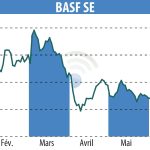
Lessons from a Digital Revolution: How Iconic Camera Brands Fell Behind
The evolution from film to digital photography reshaped the entire industry in ways both expected and unpredictable. As I sit down to take a closer look at the companies that once dominated the scene, I am reminded of the tricky parts of managing unexpected technological disruption. In this editorial, we dig into the stories of Kodak, Polaroid, Contax, Konica Minolta, and Bronica—brands that suffered not merely because of external pressures but due to a lack of agile strategy during a time loaded with issues. Their stories offer key insights on handling disruptive innovation in any industry.
Companies locked into their traditional business models often struggle with the complicated pieces of digital transformation, and these camera giants are powerful examples of this phenomenon. Their failures did not occur overnight, nor were they inevitable outcomes of market evolution; rather, they were the result of management’s failure to anticipate behavioral and technological shifts that emerged with aggressive digital techniques and the expanding consumer appetite for immediate results.
Adapting to Change: The Unforeseen Pitfalls of Technological Complacency
When digital photography first emerged, its potential was considered by many as a mere laboratory experiment. Many industry leaders did not see beyond the familiar—film. Their focus remained fixed on protecting proven revenue streams instead of figuring a path to integrate new technology. As a result, when the digital wave surged, companies that could have rethought their strategies ended up overwhelmed by new consumer behaviors and market expectations.
Below is an overview of the common problematic assumptions that plagued these brands:
- Behavioral Continuity Assumption: The belief that photographers’ routines and needs would remain stable.
- Quality Premium Assumption: The idea that consumers would always pay extra for technical superiority.
- Brand Transferability Assumption: The expectation that a film-era brand’s strength would easily shift into the digital age.
These assumptions, simplified though they may appear, turned out to be a tangled mix of oversights that contributed significantly to operational failures. As the stories of Kodak, Polaroid, Contax, Konica Minolta, and Bronica reveal, embracing the changes ahead—even when that shift appears intimidating—can mean the difference between demise or a pivot to lasting modern success.
Kodak: The Cautionary Tale of Ignoring Digital Disruption
Kodak’s story is perhaps the most emblematic of a company that, when faced with brave new digital ideas, chose to protect its film business rather than exploring new possibilities. Steven Sasson’s development of the first digital camera prototype in 1975 should have signaled a new era, but Kodak’s leadership viewed it as just an interesting experiment—a move that would disrupt the business model they had depended on for decades.
Despite its enormous intellectual assets, including over 1,000 patents on digital imaging, Kodak’s reluctance to thoroughly dive in allowed the market to surge ahead. The company’s strategy was riddled with self-imposed limitations, anchored in an old-fashioned business model that prioritized recurring film sales over investing in a future that was rapidly evolving.
Understanding the Downfall: Protective Strategies That Held Them Back
Kodak’s overemphasis on its established razor-and-blade approach—where inexpensive cameras boosted high-margin film sales—created a strategic lock-in. Here are some of the twisted decisions that contributed to its downfall:
- Defending Established Revenue: Rather than embracing the digital change, Kodak clung tightly to a model that was becoming obsolete.
- Resisting Cannibalization: Company leadership feared that introducing digital products would undermine their lucrative film business.
- Internal Culture Issues: The engineering teams were deeply rooted in chemical and physical product innovation, leaving little room for the rapid adaptation to software-centric digital imaging.
Perhaps the most ironic aspect was Kodak’s failure to profit from its own innovation. Instead of licensing its digital patents to emerging camera makers, Kodak allowed competitors to reap the benefits of the technology they had pioneered. This reluctance to pivot is a classic lesson in the importance of strategic cannibalization: sometimes the most essential change is to disrupt your own business before an outsider does.
Polaroid: The Instant Photo Legend That Missed the Digital Opportunity
Polaroid’s heritage is built on delivering immediate gratification. Founded by Edwin Land and made famous for its instant photography process, Polaroid captured the hearts and minds of consumers who needed immediate results. The company’s success was fueled by a model similar to Kodak’s, one that relied on consumables—in this case, the film packs—to generate recurring revenue.
Digital photography proposed a more instantaneous form of gratification, with images that appeared immediately on screens without the need for costly chemical processes. Despite this natural progression, Polaroid’s leadership remained fixated on refining its chemical instant photography methods while ignoring digital evolution.
Misreading Consumer Behavior: A Strategy Misaligned with Modern Expectations
Polaroid’s decision to focus on a niche product that had lost its broader applicability highlights the danger of misreading market signals. Polavision, their attempt to introduce instant video capture in 1977, is a prime example.
Key reasons for their missed opportunity include:
- Marketing Mismatch: The company assumed that customers who loved instant photography would automatically embrace digital-like instant video capture.
- Technological Hesitation: Despite developing prototypes for digital systems, concerns over image quality and brand dilution stopped Polaroid from pushing forward.
- Legal Distractions: Extensive litigation with competitors, including Kodak, diverted attention from evolving market demands.
Ultimately, Polaroid’s decline, culminating in a bankruptcy in 2001, was driven by the failure to adapt to the subtle details and small distinctions in consumer behavior that digital technology would soon bring about. Interestingly, the brand’s later revival as Polaroid Originals shows that there remains a niche, albeit limited, for products that mix classic appeal with modern technology.
Contax: When Premium Quality Isn’t Enough in a Digital Era
The Contax brand was synonymous with precision craftsmanship, thanks to a fruitful collaboration between Carl Zeiss and Japanese manufacturers. Their SLR cameras equipped with Zeiss T* lenses were once the benchmark for quality in photography. However, the transition to digital imaging undermined what had long been their competitive edge.
Digital sensors and innovative image processing began to level the playing field. Even as Contax continued offering exceptional optical quality, the tangible differences in image quality diminished when viewed on computer screens or standard-sized prints. Essentially, what was once a must-have feature gradually became just one of many small details rather than the primary selling point.
Digital Transition and Mount Incompatibility: Technical Excellence Meets New Obstacles
The Contax N Digital, despite being the first full-frame digital SLR, suffered from high noise levels, slow performance, and an inhospitable price tag. The technological leaps that were supposed to secure Contax’s future instead turned out to be minor twists in a rapidly evolving market.
Another significant misstep was the introduction of a new N-mount system for autofocus cameras. This move forced loyal professionals to choose between protecting their existing investments in a legacy lens system and accessing modern autofocus capabilities.
This strategic decision alienated a long-established customer base. Instead of making it easier for photographers to find their way within the digital era, Contax’s decision compounded the challenges of transitioning to a new market reality.
Konica Minolta: Innovation Hampered by Strategic Hesitation
Konica Minolta was a bright light in the photography world, known for their early adoption of game-changing ideas. The introduction of the Minolta Maxxum 7000 was nothing short of revolutionary, serving as the first widely successful SLR with integrated autofocus and motorized film advance. The camera’s success underscored Minolta’s strength in technical innovation.
However, despite these early wins, the company stumbled when it came to executing a comprehensive digital strategy. Konica Minolta was notably the last of the major manufacturers to move decisively into the digital SLR market, entering only after competitors like Canon and Nikon had already established robust positions.
Poor Timing and Merged Cultures: The Price of Delayed Digital Adoption
Minolta’s pioneering spirit did not translate into lasting market dominance during the digital transition. Even their breakthrough in sensor-based image stabilization, showcased in the DiMAGE A1 bridge camera, came in a product category that was quickly rendered obsolete by more refined digital SLRs. The delay was nerve-racking and ultimately costly.
Further complicating matters, the merger between Konica and Minolta, initiated to build scale and extend resources, only resulted in a larger but more confused organization. The new entity struggled with conflicting product lines and a cultural integration that proved off-putting during a time when clear direction was super important.
Eventually, Konica Minolta decided to withdraw entirely from the camera business, transferring its digital assets to Sony—a move that, in hindsight, set the stage for Sony to become a leader in the mirrorless camera revolution. Minolta’s story teaches us that innovation, when not backed by decisive execution and coherent strategy, can quickly become irrelevant in an age defined by rapid technological change.
Bronica: The Medium Format Specialist Overlooked by the Digital Wave
Bronica carved out a niche in the world of medium format photography with modular design systems that provided professional photographers unparalleled versatility. Their cameras allowed users to mix and match lenses, film backs, and viewfinders depending on shooting requirements, and in doing so, they offered a flexible and financially accessible system compared to competitors like Hasselblad.
However, Bronica’s potential for digital success was missed due to a lack of proactive partnerships. The modular design concept, which should have been a natural fit for digital backs, was never fully leveraged by aligning with digital back manufacturers. Instead, Bronica’s customers were forced to rely on expensive adapter solutions that did not meet the efficiency or reliability needs of a modern digital workflow.
The Missed Digital Opportunity: Legacy Strengths Left Unexploited
Despite having a robust product for film-based photography, Bronica’s leadership failed to anticipate the fine points of digital integration. A few factors contributed to their downfall:
- Failure to Partner Effectively: While competitors worked closely with digital back companies like Phase One and Hasselblad, Bronica’s approach was too passive.
- Lack of Support Systems: Without factory-supported digital solutions, Bronica photographers were left managing around expensive and unreliable third-party options.
- Ownership Changes: The acquisition by Tamron, which was more interested in the company’s optical expertise than its camera production, accelerated their exit from the market.
The case of Bronica is a reminder that even when a company enjoys a strong position within a specialized niche, failing to adjust to a new technological ecosystem can lead to complete market obsolescence.
Common Themes: Strategic Missteps in the Face of Innovation
Examining these five stories, several common threads emerge that are critical to understanding the tangled issues surrounding disruptive technology:
| Brand | Key Strategic Error | Lesson Learned |
|---|---|---|
| Kodak | Focused on preserving old revenue streams and ignored digital potential | Embrace change and be willing to disrupt your core business model |
| Polaroid | Over-invested in chemical processes while delaying digital response | Anticipate shifts in consumer behavior and adapt quickly |
| Contax | Introduced incompatible digital systems that alienated loyal customers | Ensure technological transitions complement existing investments |
| Konica Minolta | Delayed digital adoption despite early innovation and merged cultures | The timing and execution of digital transition are as important as the technology itself |
| Bronica | Missed out on the digital opportunity despite a modular design advantage | Forge partnerships and support systems that align with market trends |
Each of these cases illustrates that technical prowess alone is not enough to secure longevity in the digital age. Rather, it is the ability to steer through the confusing bits of strategic change and invest in new consumer experiences that ultimately defines success.
Facing New Disruptions: Applying Lessons to Modern Camera Manufacturers
The stories of these once-legendary brands are more than just historical footnotes; they serve as a manifesto for contemporary companies facing the next wave of disruptions. Today, computational photography powered by smartphones and AI-driven image processing is reshaping the camera industry even further.
Modern manufacturers like Apple, Google, and Samsung are using advanced software and hardware integration to create products that meet the increasingly sophisticated expectations of consumers. These companies are showing that the market now values a complete ecosystem of services and user experiences over pure technical specifications.
Embracing Strategic Cannibalization and Self-Disruption
One key takeaway from previous missteps is the idea of strategic cannibalization. Sony’s successful transition from A-mount DSLRs to E-mount mirrorless cameras is a prime example of a company that willingly restructured its own product lines before a competitor forced its hand. For today’s camera manufacturers, this means making tough decisions to phase out established products in favor of innovative alternatives that better meet current needs.
Key strategies include:
- Prioritizing Integrated Experiences: Instead of simply pushing cutting-edge sensor technology, companies should focus on delivering complete ecosystems that offer smooth connectivity, advanced editing tools, and cloud integration.
- Focusing on Niche Markets: Rather than competing solely on price or general features, camera manufacturers need to cater to specialized needs by offering high-end capabilities such as extreme telephoto reach, excellent low-light performance, or superior creative control.
- Investing in UI/UX Innovation: Designing products that allow users to easily get around the nitty-gritty of digital photography can help companies win over both casual consumers and professional photographers.
Enhancing Ecosystem Integration: The New Standard
In today’s competitive landscape, merely offering a high-quality camera isn’t enough. The sample experience—ranging from initial activation to post-processing—needs to be integrated and smooth. Consumers expect to store and share their images seamlessly, enhanced by apps, social media integration, and cloud backup options. This comprehensive ecosystem is a small twist that can elevate a brand’s standing significantly.
For example, Canon and Nikon are now facing stiff competition from mirrorless camera manufacturers that have mastered digital ecosystems. By offering updates and connectivity options that tie together cameras, smartphones, and editing software, companies can ensure that they remain relevant even in the face of disruptive technology.
Building Resilience in an Ever-Changing Market
While the fates of Kodak, Polaroid, Contax, Konica Minolta, and Bronica may appear as cautionary tales, their journeys are also instructive blueprints for what might be done differently. Their downfall was not driven solely by the external pressures of digital technology, but by the internal resistance to change and the inability to accurately read buyer behavior.
Modern businesses—whether in the camera industry or beyond—can learn from these stories by recognizing that:
- Innovation is Necessary, but Execution is Key: A breakthrough idea fails to create long-term value if it isn’t supported by a comprehensive plan to transition legacy systems and operations.
- Staying Agile is Crucial: In a world where consumer needs are swiftly evolving, companies must remain flexible, constantly ready to find their way through new market twists and turns.
- Customer Experience Must Remain Central: The era when technical excellence was enough is long gone. Today, the overall user experience, from pre-purchase to after-sales service, plays a critical role in sustaining a brand.
The key is adapting before the market changes dramatically. Waiting too long or underestimating new consumer behaviors can cause even well-established brands to falter. Whether it’s integrating AI-driven computational photography or expanding online ecosystems, companies need to be proactive rather than reactive.
Future-Proofing Strategies: Lessons for the Next Generation of Innovators
Looking ahead, companies must now prepare for further waves of technological disruption that are likely to emphasize even more on software, connectivity, and global integration. The transition from film to digital was only one of many evolution points in the history of photography, and there will be many more.
Here are some super important strategies for future-proofing your business in today’s tricky market:
- Invest in Research and Development: Allocate resources to research that digs into the finer details of emerging consumer behaviors and the latest digital trends.
- Create a Culture of Continuous Innovation: Encourage the organization to experiment with new ideas, even if it means shifting away from traditional revenue models.
- Leverage External Partnerships: Sometimes, the best way to get around internal roadblocks is to collaborate with startups and tech companies that provide fresh perspectives and specialized expertise.
- Focus on User-Centric Design: Engage with your customer base and incorporate their feedback early in the product development cycle to create products that resonate with their needs.
In an industry where the next big breakthrough could redefine the entire market landscape, staying ahead means not only predicting what will be popular but also being the first to offer it. Companies that manage to blend their legacy strengths with new digital capabilities will be better equipped to figure a path through what can only be described as nerve-racking periods of change.
Reflections on a Time of Transformation
As we reflect on the dramatic shifts that have reshaped the photography industry, it becomes clear that technical brilliance falls short without corresponding strategic agility. Kodak, Polaroid, Contax, Konica Minolta, and Bronica were once icons whose names commanded respect and admiration. Their inability to adapt to the digital revolution offers a story replete with lessons that echo far beyond the realm of photography.
Their fates underline the importance of being open to new methods, of actively seeking opportunities to innovate internally, and of understanding that every technological revolution demands a reevaluation of customer needs. The transition from film to digital was filled with intimidating challenges—the system-wide changes required companies to reexamine everything from core business strategies to the subtle parts of customer experience.
Today’s camera manufacturers must acknowledge that the next wave of disruption—driven by AI, computational photography, and ever-more connected ecosystems—is already on the horizon. By learning from the missed opportunities of the past, companies have an opportunity to shape their futures instead of merely reacting to the unfolding changes.
Conclusion: Shaping Disruption Rather Than Resisting It
In conclusion, the demise of once-dominant camera brands is a poignant reminder that survival in a hypercompetitive market is not guaranteed by past successes. The tangled issues faced by Kodak, Polaroid, Contax, Konica Minolta, and Bronica ultimately resulted from a combination of protective strategies, technical inertia, and an inability to see the hidden complexities of digital transformation.
Modern businesses must steer through these confusing bits of industry evolution by embracing strategic cannibalization, investing in comprehensive user experiences, and remaining agile in the face of disruptive trends. The lives and legacies of these brands serve as valuable case studies—their stories rich with super important lessons about adapting before it’s too late.
By fostering a culture where change is embraced rather than feared and where leadership accepts that sometimes the best approach is to disrupt one’s own successful business, companies can not only survive but thrive in the midst of technological revolutions. As we stand on the threshold of the next great innovation wave in photography and beyond, the key takeaway is simple: shape disruption rather than resist it, or risk becoming a relic of a bygone era.
This perspective is not only applicable to camera manufacturers but to every business facing the daunting twists and turns of technological advancements. Only through continuous reinvention and a willingness to get into the nitty-gritty of market demands can companies hope to remain relevant and resilient in today’s ever-changing world.
Originally Post From https://fstoppers.com/historical/5-camera-brands-died-because-they-couldnt-adapt-706230?utm_source=FS_RSS&utm_medium=RSS&utm_campaign=Main_RSS
Read more about this topic at
Adapt or Die – A Book by Thomas Douglas
Adapt or Die: Leadership Principles from an American …


